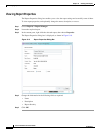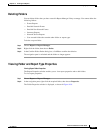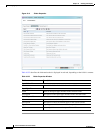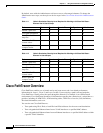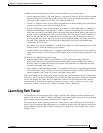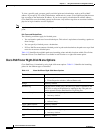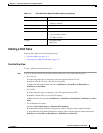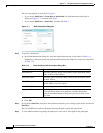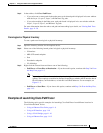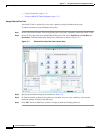
CHAPTER
11-1
Cisco Prime Network 4.0 User Guide
OL-29343-01
11
Using Cisco PathTracer to Diagnose Problems
Cisco PathTracer enables you to view a network path between two network objects. The following topics
describe Cisco PathTracer and how to use it:
• User Roles Required to Work with Cisco PathTracer, page 11-1
• Cisco PathTracer Overview, page 11-2
• Launching Path Tracer, page 11-3
• Viewing Path Traces in Cisco PathTracer, page 11-14
• Viewing Path Trace Details, page 11-20
• Saving and Opening Cisco PathTracer Map Files, page 11-26
• Saving Cisco PathTracer Counter Values, page 11-26
• Rerunning a Path and Comparing Results, page 11-27
• Viewing Q-in-Q Path Information, page 11-27
• Viewing L2TP Path Information, page 11-28
• Using Cisco PathTracer in MPLS Networks, page 11-29
User Roles Required to Work with Cisco PathTracer
This topic identifies the roles that are required to work with Cisco PathTracer. Cisco Prime Network
(Prime Network) determines whether you are authorized to perform a task as follows:
• For GUI-based tasks (tasks that do not affect elements), authorization is based on the default
permission that is assigned to your user account.
• For element-based tasks (tasks that do affect elements), authorization is based on the default
permission that is assigned to your account. That is, whether the element is in one of your assigned
scopes and whether you meet the minimum security level for that scope.
For more information on user authorization, see the Cisco Prime Network 4.0 Administrator Guide.
The following tables identify the tasks that you can perform:
• Table 11-1 identifies the tasks that you can perform if a selected element is not in one of your
assigned scopes.
• Table 11-2 identifies the tasks that you can perform if a selected element is in one of your assigned
scopes.




